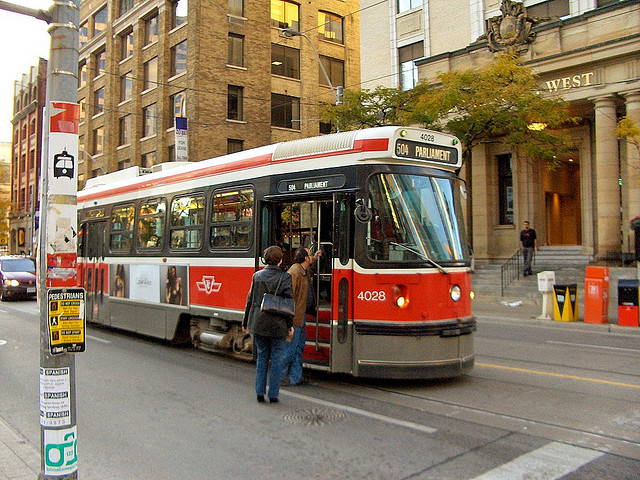Please help rabble.ca stop Harper’s election fraud plan. Become a monthly supporter.
Toronto City Council will meet July 8 to vote on the development of a transit fare equity policy for the GTA.
The proposed fare equity policy will put a focus on transit affordability across the city with a particular spotlight on low-income people. City staff and advocates alike have recently pointed out that transit accessibility is about more than location and mobility; it’s about affordability as well.
And just what does affordability mean for low-income individuals living in the GTA?
A transit pass costs $133.75 per month or $1,605 per year. Ontario’s Low-Income Measure (after-tax) is $20,633 for an individual. That means a low-income person who purchases a monthly pass pays at least 7.8 per cent of their income towards a transit pass.
Fifteen per cent of Toronto’s residents live in low income — that’s more than 800,000 people.
TTC riders pay the highest monthly pass costs of all similar city-wide transportation systems in North America. Until last year, they also paid the highest single rider fee.
Transit authorities collect revenue from multiple sources, including advertising fees as well as provincial and municipal government subsidies. The portion of operating expenses paid by transit fares and overall revenue varies from city to city.
TTC rider fares paid for 53 per cent of the operating expenses in 2012.
That’s a higher rider fare contribution than in Montreal, where public transit rider fares paid for 40 per cent of that city’s operating expenses.
Translink rider fares in Vancouver — where the transit authority has managed to diversify it revenue base through taxation, tolls and fines — contributed to only 31.5 per cent of the operating expenses in 2012*.
Clearly, other large cities have figured out ways of reducing the cost of riding public transit. The strategy could yield many benefits.
Reducing the cost of getting to work for low-income Torontonians would pay dividends for the local economy. It means more money to spend at the grocery store and other local business. It means an increased ability to meet one’s basic needs. It could even mean access to different or higher quality work that is currently inaccessible due to expensive transportation costs.
A fare equity policy in Toronto is just one in a suite of options that can help ensure a prosperous and fair Toronto and Ontario in the future.
Kaylie Tiessen is an economist with the Ontario Office of the Canadian Centre for Policy Alternatives (CCPA Ontario). Follow her on Twitter @KaylieTiessen
*Author’s calculations based on the 2012 annual reports from TTC, Translink and Societe de Transport de Montreal.
Photo: bgilliard/flickr



